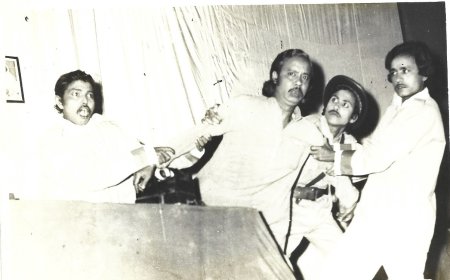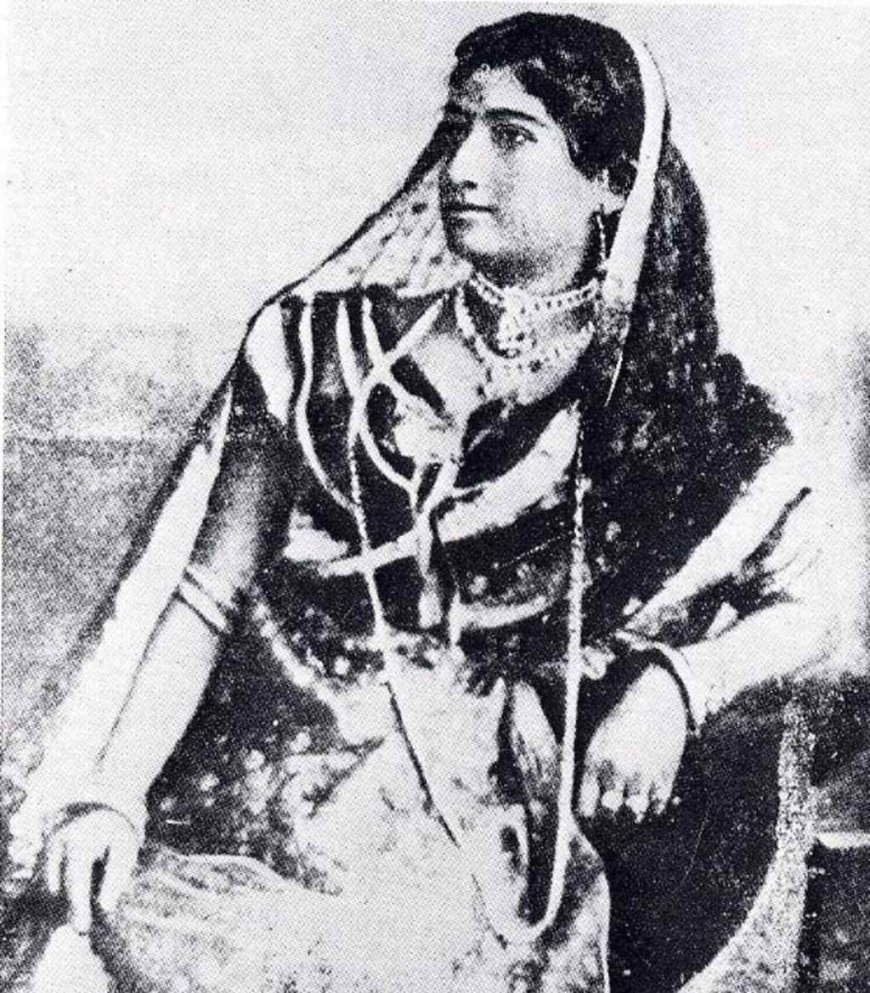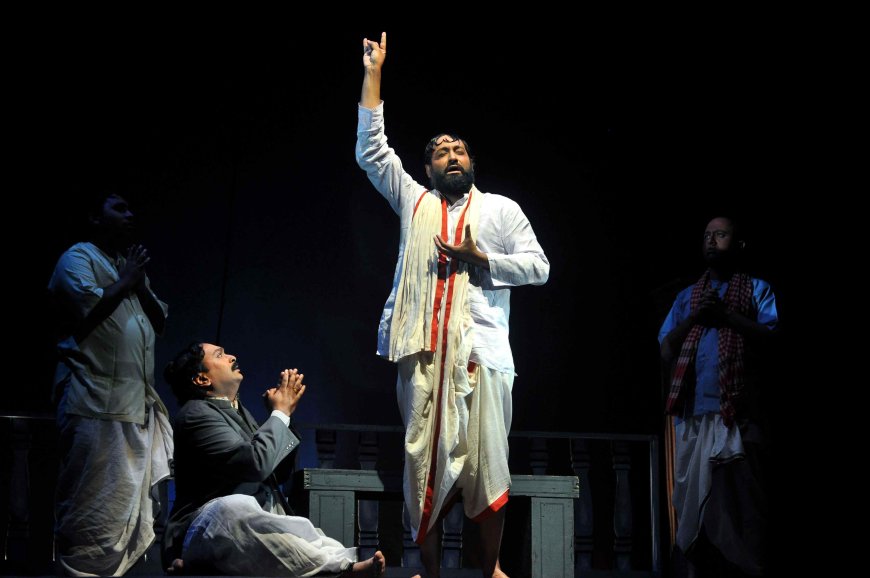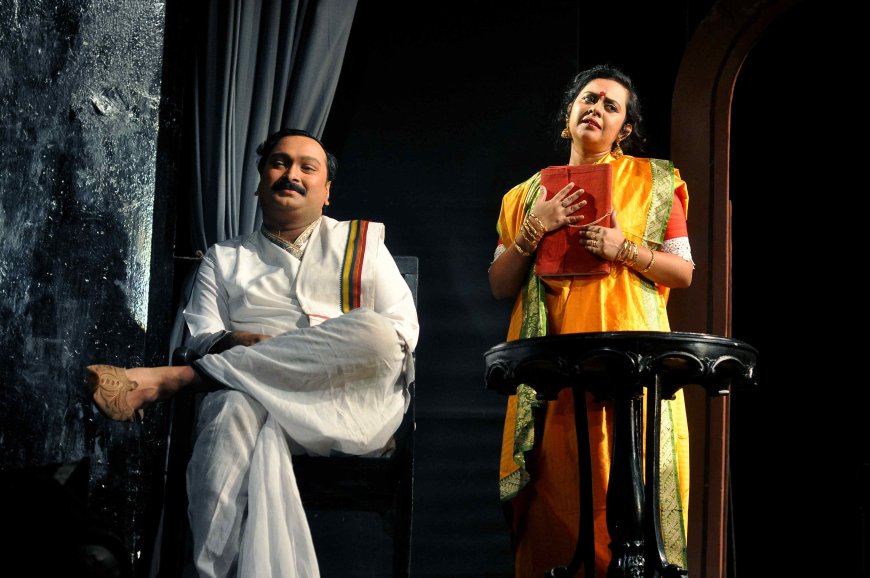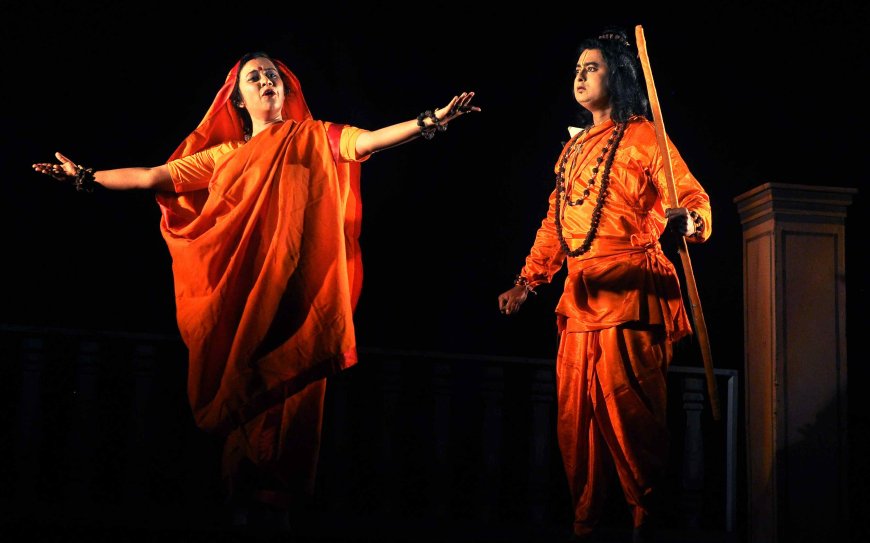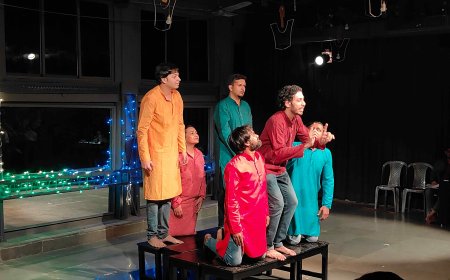Play Review: NOTI BINODINI BY SMARANIK
Shoma A. Chatterji provides an insightful review of the play NATI BINODINI on the life of a famous theatre actress of early Bengali theatre who remains immortalised by her life story and by her plays.
Kolkata’s Tapan Theatre which has a history of its own, recently played host to a very popular play picked straight from the history of Bengali theatre in Kolkata. The play revolves around a famous actress of the Bengali stage known as Noti Binodini, (or Binodini Dasi) the prefix “Noti” standing for her profession – ‘performer’ – in a derogatory way and “Binodini” being her name.
SmaranniK Theatre Group is a registered Bengali theatre group of Bengaluru established in 2012 by theatre activists who have been cultivating theatre since past several years in the Garden City. In ten years, under the leadership of Sayandeb Bhattacharya, SmaranniK has produced five fulllength plays, one short play, and two audio plays. SmaraniK has also organized eight grand theatre festivals in Bengaluru and one in Kolkata with legendary theatre personalities.
The play revolves around the life of the famous Bengali actress, Binodini Dasi (1862– 1941), also known as Nati Binodini, who born to prostitution, started her career as a courtesan and at twelve Later, she started performing in Calcutta's National Theatre, under the mentorship of its founder, Girish Chandra Ghosh.
Plays on Binodini's life have been staged over and over for a long time because the story of her life is more dramatic than the ones we read and has more twists and turns than a film script. Binodini carved an immortal place in the history of Bengali theatre not only for her talent and her versatility as an actress, but also for the sacrifices she made in the cause of theatre. She documented the story of her life in two separate autobiographies, Aamar Katha (My Story) and Aamar Abhinetri Jeebon (My Life as an Actress.) Kali for Women has published the English translations by Rimli Bhattacharya. She was perhaps the only literate actress of her time though her roots lay in the red light lanes of Kolkata. The story of her life, the struggles she went through, the taboos she broke are as enchanting and enriching as her real life.
Binodini’s first appearance on stage was a small role of a sakhi (handmaid) in a play titled Beni Sanhar (The Binding of the Braid) by National Theatre. However, Binodini’s first ever important role was as Hemlata in a play of the same name by Haralal Ray. In her autobiography, Binodini has spoken at length about play rehearsals, as well as dress rehearsals, which would be held at natya mandir.
The first play staged in 1883, at the Star which she joined later was Daksha Yagna, with both Binodini and Girish Chandra in leading roles. The following year, Chaitanya Lila was performed. Soon after, Binodini once and for all quit the professional stage at the age of twenty-three. Binodini’s performance as Bengal’s most charismatic saint was to determine subsequent readings of her life. The 1884 production at the Star Theatre was a great success and set the trend for the ‘biographical devotional’ on the public stage.
This performance by SmaranniK remains loyal to the life story of Binodini as we have read about it and seen different theatre groups perform it over the years. The acting is quite stylized to remain consistent with the time this is set in but becomes a bit softer when the scene returns to the ‘real life’ of Binodini and the other characters in the play.
The title role played by Priyanka Bhattacharya is justified in terms of her simple and straightforward performance, her singing, the play of emotions across the span of the play and so on. The same applies to Sayandeb Bhattacharya as GirishChandra Ghosh who has also directed the play and is the founder-director of SmaranniK. Dipankar Banerjee as Thakur Ramkrishna, who was overjoyed with Binodini’s performance in and as Chaitanya Mahaprabhu has fulfilled the demands of the difficult character. Playwright Rajat Ghosh has done full justice to the stories we have read and heard about the great actress. The play does not mention about the autobiography Binodini wrote in her old age which carries flashes of her very dramatic life. But that does not take away from the play its honesty and simplicity.
As the play moves forward introducing several acquaintances of Binodini, it slowly takes a steep turn and sheds light on the sacrifice, pain, betrayal, and misfortune she went through. Although she was referred to as the ‘Flower of the Native Stage’ and ‘Moon of the Star Theatre’, the drama brings across the truth of Binodini’s life and shows how the mentally devastated actress left the stage at the age of 25. Blessed by the saint, Sri Ramakrishna Paramhansa, Binodini tried to attain wisdom and peace, which finally gives the play a new perspective. She remains the mistress of one of her great fans, Raja Babu (Aniruddha Roy) but throws him out when she learns that he has married according to his parents’ wishes though he gave Binodini the understanding that he would one day marry her and build a family.
When the theatre company that took Binodini to starry heights began to collapse, in 1883, her mentor, Natya Samrat Girish Ghosh persuaded her to become the mistress of Gurmukh Rai (Rajshekar Bhattacharya), a rich Marwari businessman who was a devoted fan of Binodini. The actress, hating to go back to her old life of prostitution, rejected the idea. But her love for the stage and empathy for her peers whose lives were endangered, won in the end and she succumbed to pressure. Instead of accepting a cheque for Rs.50,000 from Gurmukh Rai, Binodini asked him to build a theatre.
Rai, besotted with Binodini, agreed at once, but on condition that the theatre hall would be named B-Theatre, after the first letter of Binodini's name. But after the theatre's name was registered, Binodini was shocked to discover that her name was rejected in favour of another name, Star, in 1884. Her peers and mentor had decided that a theatre house named after a prostitute would fail to draw an audience. This did not happen and Binodini was left lonely and alone when Rai, a married man, repaired to his wife and original family and died there. The original Star Theatre was later demolished completely to widen the road and the Star we see today is a different one.
The musical score which is an essential feature of the Binodini story is scored beautifully by Murari Roychoudhury while the costume is good but the make-up by Panchanan Manna is inconsistent at places and this should have been avoided. This somehow hampers the smooth and fluid flow of the performance. The choregraphy by Kabir Sen Barat has invested the play with well-rehearsed dance numbers by the group artists.
Binodini documented the story of her life in two separate autobiographies, Aamar Katha (My Story) and Aamar Abhinetri Jeebon (My Life as an Actress.) Kali for Women had published the English translations by Rimli Bhattacharya. She was perhaps the only literate actress of her time though her roots lay in the red light lanes of Kolkata.
SmaraniK’s presentation of the play has sustained the relative simplicity of the stage décor, costumes of the characters because it is based on the life of a ‘period’ actress at a time when stage performances were stylized, loud, but lacked the lavish glamour historical plays today take pride in. This gives the play a more “real” look and makes it convincing. But it turned a bit too lengthy towards the end covering a little more than two hours of performing time.
Sayandeb Bhattacharya has done the right thing but not trying to glamorize the play though some groups and have it a grand opera type of performance which is good from the commercial angle, but takes away from the simple, successful but exploited life of a theatre actress who left her footprints on the sands of time.
Did she voluntarily walk away from the stage one fine day and was never heard of again? Or, did she remain in the wings as a guide and teacher, not stepping into the stage again? Or, as some stories go, did she follow Thakur Ramkrishna Paramhamsa when he walked up to her after her sterling performance as and in Sri Sri Chaitanya Mahaprabhu? No one knows.
*****
What's Your Reaction?









































